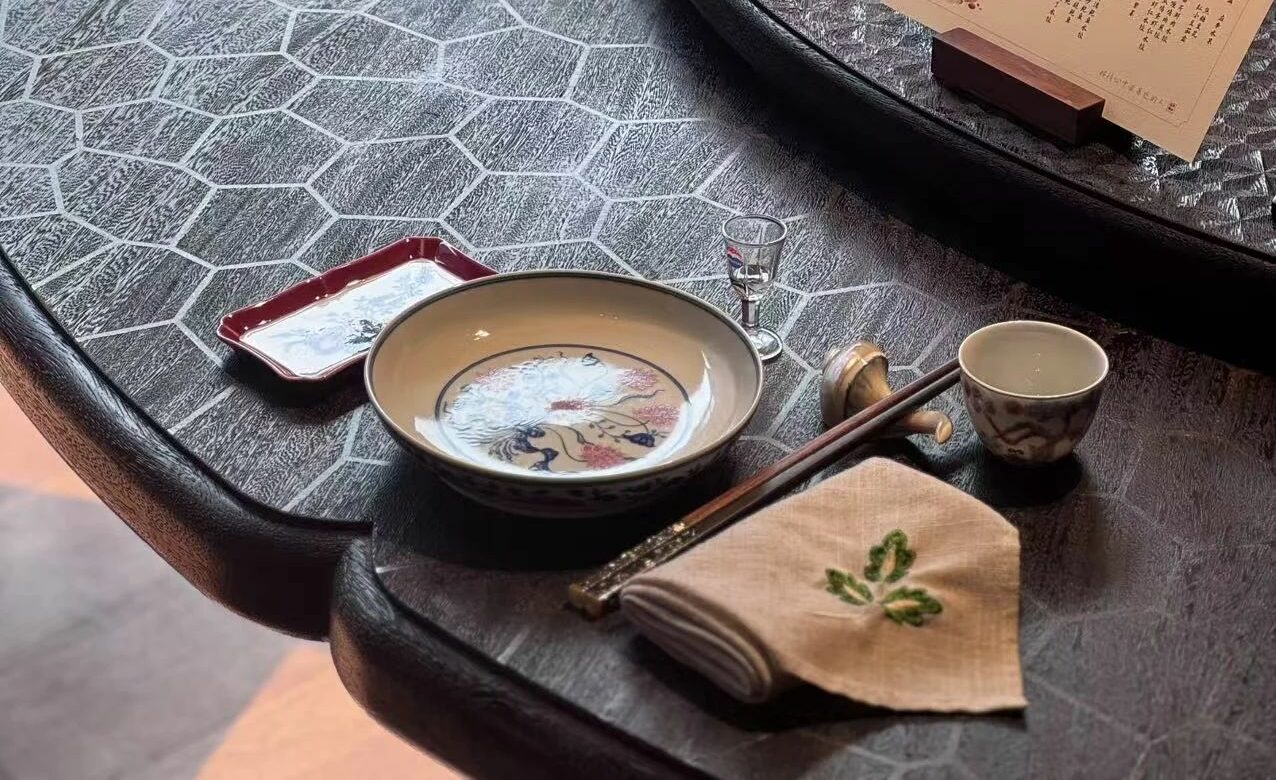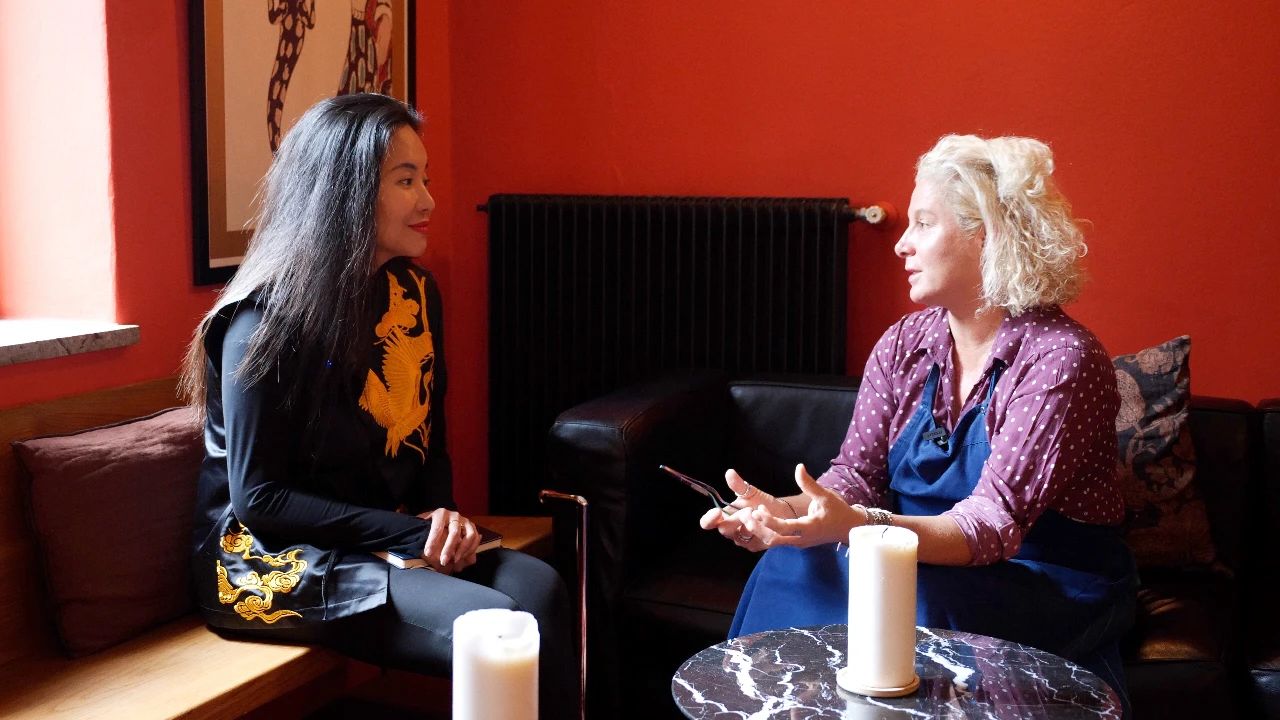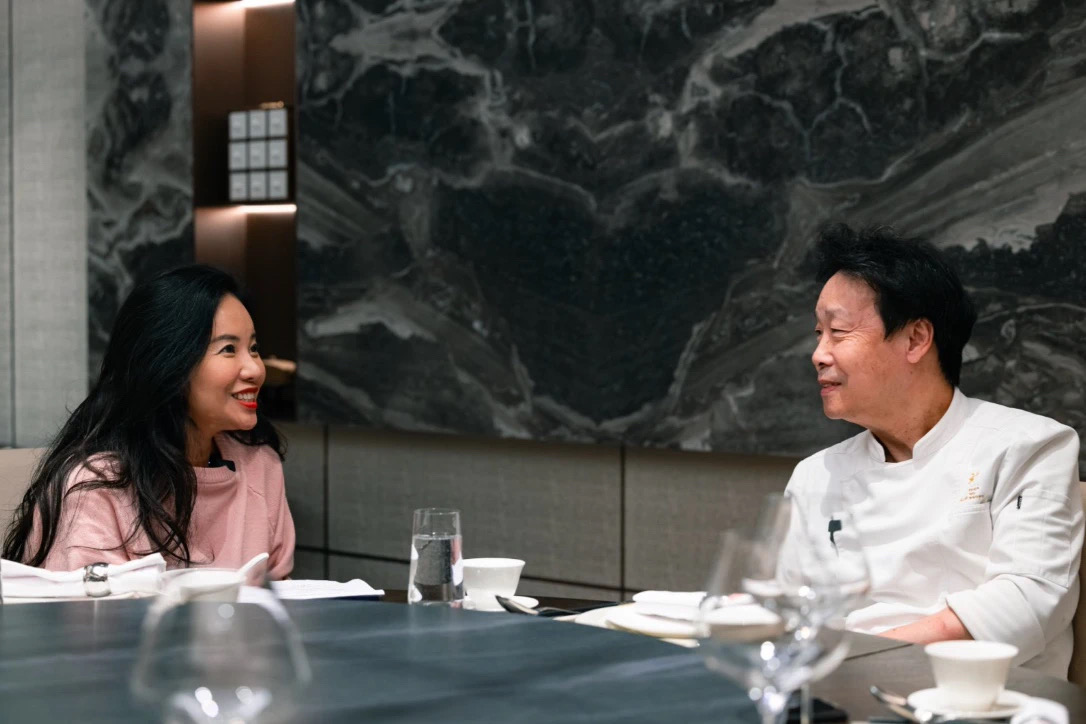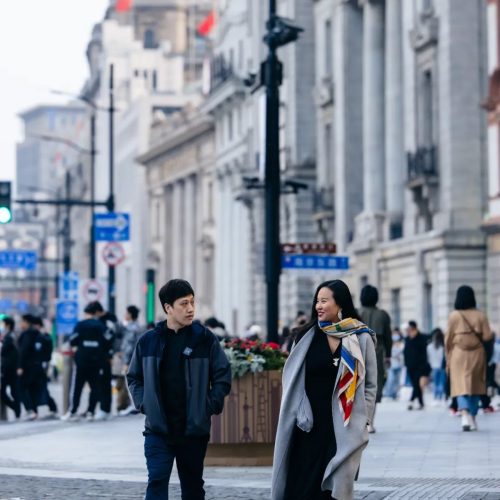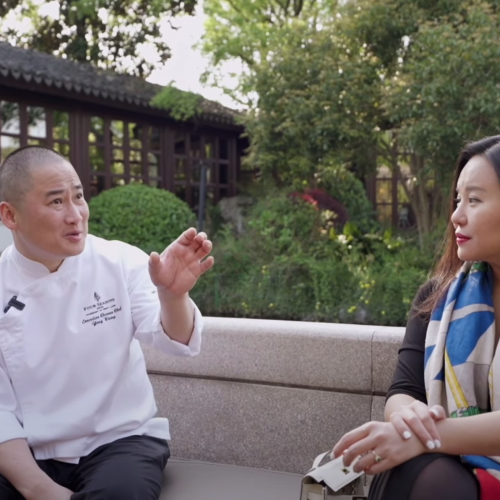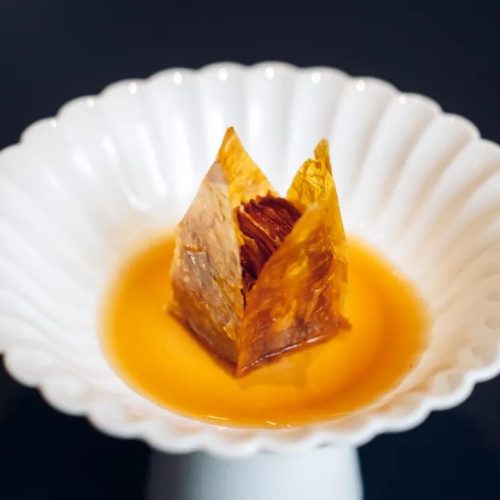This culinary journey to Niigata was, for me, a moment of reflection.
I had hoped to linger a little longer at Satoyama Jujo, to let both body and mind settle into the gentle rhythm of mountains and hot springs. Then a compelling opportunity beckoned—the chance to experience Uozen.
To secure a seat at this intimate restaurant, which only accommodates six guests at a time, we made some compromises in our itinerary. After the meal, one of my companions turned to me and said, “If we hadn’t come to Uozen, I would’ve regretted it deeply.” Indeed, this pilgrimage is one I’ll remember for a long time.
Niigata is a long and narrow prefecture, and gourmet destinations are scattered rather than clustered. To explore its culinary scene properly, careful planning and thoughtful logistics are essential. We crafted this trip with the principle of “no compromise on food,” while ensuring the journey wasn’t overly strenuous — after all, this is a gourmet tour.
At the summit of this tour stands Restaurant Uozen, a French restaurant run by Chef Kazuhiro Inoue and his wife Mariko Inoue. When Japanese food writer Takefumi Hamada wrote about it, he remarked:
“Chef Inoue holds a license to process game meat and personally handles the butchering. While more restaurants in Japan now serve gibier, it’s almost unheard of for a chef to hunt wild birds and animals, properly break them down, and then cook them himself. He even goes fishing off the coast of Sado. There may be no other restaurant in Japan that goes to such lengths.”
Located in Sanjo, Niigata, the restaurant stands quietly amidst rice fields and rural landscapes. It was once a traditional Japanese eatery run by Chef Inoue’s father-in-law. In 2013, the couple took over the space and transformed it into a French restaurant rooted in the land’s essence.
Chef Inoue is not just a chef — he is a hunter, fisherman, and farmer. With deep knowledge of ingredients, he brings each one to its ideal state. He hunts copper pheasants, catches yellowtail, grows Chinese cabbage and snow-season carrots. Most ingredients served at Uozen have passed through his hands. He rejects market dependency, choosing instead to let nature and the seasons dictate his menu. For him, cooking is coexistence with nature.
Stepping into the restaurant, one is greeted by a preserved counter space to the right — a vestige of its days as a traditional Japanese restaurant. The wide wooden floors and minimalist yet Nordic-tinged decor exude warmth. Animal hides lie on the floor, and a fireplace glows with burning logs, creating a grounded and comforting atmosphere.
Off to the side is a traditional tatami lounge, draped in more furs and adorned with rustic simplicity. It instantly brought back memories of my time at Fäviken in Sweden. There’s something familiar and soul-soothing in the language of such a space.
The meal began with a trio of amuse-bouches, each offering seasonal flavors and unexpected pairings.
First, a crisp tart filled with wild boar rillettes — rich, herbaceous, and earthy — topped with celery powder and pickled silvervine berries, adding dimension and depth.
 crisp tart filled with wild boar rillettes
crisp tart filled with wild boar rillettes
Next, a gibier corn dog: game sausage coated in cornmeal batter, deep-fried, and served on a twig, with a black fermented garlic sauce drizzled on top. Then came aralia sprout fritters, presented as if still clinging to their natural stems. The delicate bitterness of these spring buds was complemented by bear fat and a sansho pepper sauce, offering a subtle spice and smokiness that perfectly cut through the richness of the fried batter.

gibier corn dog, aralia sprout fritters
The first main course already captivated us: A shimmering, translucent botan shrimp bouillabaisse, featuring Sado-caught shrimp encased in a jelly made from French-style seafood stock. On top, a classic Rouille — a saffron and garlic-spiked mayonnaise — brought brightness to the dish. The shrimp’s lychee-like sweetness and briny concentration made it clear why this is a signature dish.
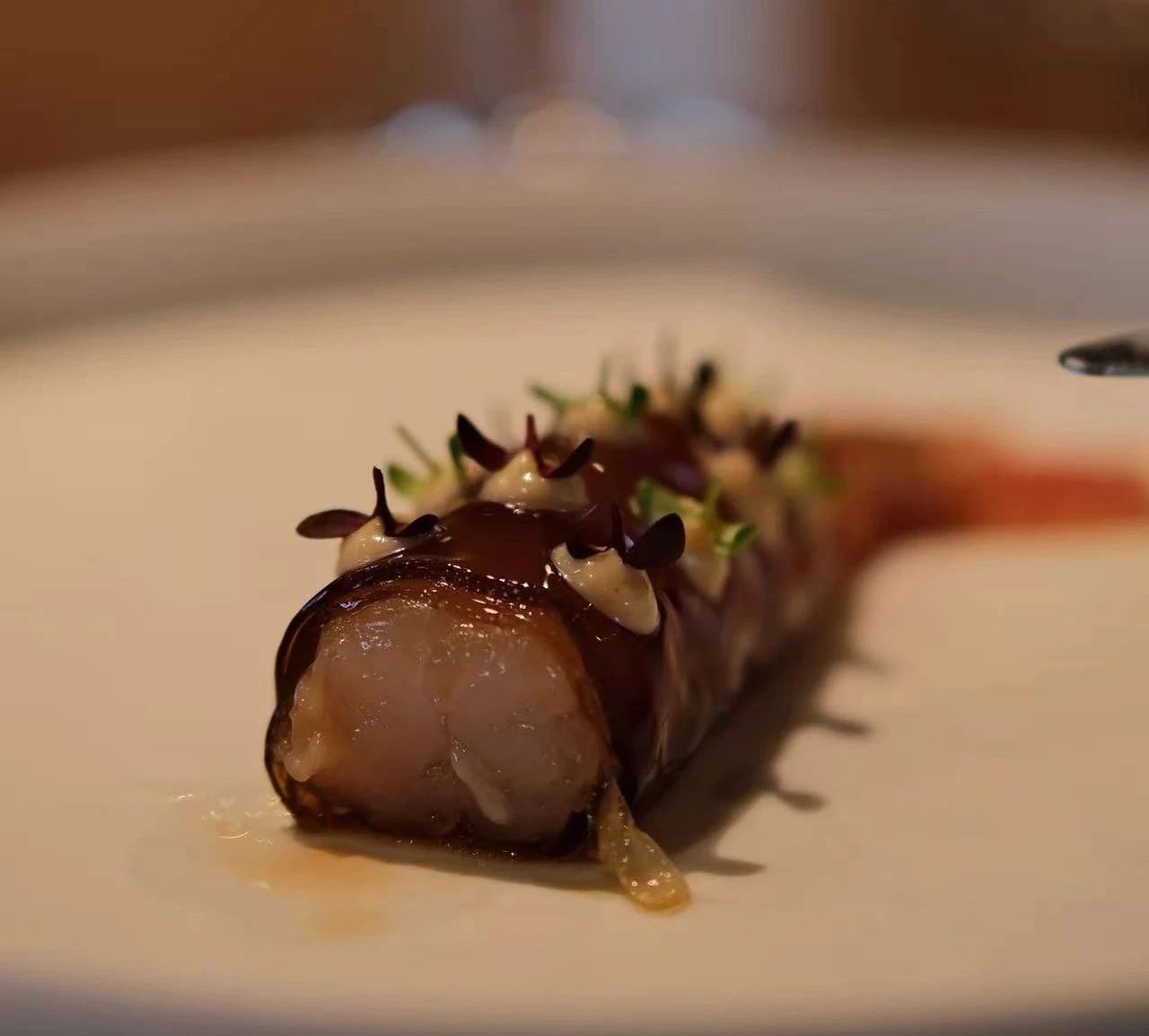
button shrimp bouillabaisse,Rouille
Next was the wild boar galette: slow-braised belly wrapped in a savory buckwheat crêpe, then baked in a stone oven. The galette, made from local buckwheat flour, was served taco-style with a foamy Sabayon infused with Japanese sansho, striking a graceful balance between hearty game and refreshing spice.

wild boar and blackwheat galette,Sabayon
The hairy crab course paid homage to Niigata’s coastal bounty. A base of crab meat and innards was blended with a purée of snow-aged carrots, topped with a rich crab broth sauce. Herb sprouts and flowers added bitterness and tang, while crispy rice puffs (made from Koshihikari rice) and salmon roe from Murakami provided texture and umami.

hairy crab
Thanks to this year’s heavy snowfall, the Chinese cabbage used had grown under a blanket of snow, amplifying its natural sweetness. Whole cabbages were slow-roasted in a stone oven from the moment guests arrived. Finished with shaved Comté cheese and a black garlic bagna càuda, it was then drizzled with a warm Vin Jaune sauce poured tableside by the chef himself. The dish echoed the aroma of the Jura wine we sipped alongside it — a vegetable course this sweet and moving is rare indeed.

Chinese cabbage,Comté cheese,Vin Jaune
The copper pheasant ravioli in game consommé was another stunner. Stuffed with tender, richly flavored pheasant, the dumplings floated in a clear, wild broth. Garnished with celery and foraged mountain greens, it was fresh, light, yet deeply satisfying.
 copper pheasant ravioli in game consommé
copper pheasant ravioli in game consommé
The main dish, mallard duck, was unforgettable. Each guest received different cuts — breast on one side, and thigh or wing root on the other. The sauce, made from duck jus and richly umami dried mushrooms, was deeply aromatic. Sweet green onions, harvested from Uozen’s garden after the thaw, and tender aletta, a kale-broccoli hybrid, completed the dish. Crispy duck ham and fried scallion roots added another layer of indulgence. The duck, roasted over an open flame, boasted a crisp, fatty skin and smoky depth that slow-cooking could never achieve. This dish, paired with a bold red wine and seasonal vegetables, marked the meal’s crescendo.
 mallard duck,aletta
mallard duck,aletta
Dessert brought a graceful close. A rice pudding base made from Koshihikari rice and Guernsey milk was topped with mascarpone mousse and milk ice cream, finished with mandarin marmalade and candied kumquat — a finale full of texture and citrusy brightness.
 rice pudding
rice pudding
The entire meal built upon itself in layers of crescendo, ending at precisely the right moment, like the perfect final note in a symphony.
As I stepped out of the restaurant, I paused at the entrance where a sign bore a quote from Etsuo Asano, founder of Niigata’s Asano Eco-Farm. His words encapsulate the soul of this place — a message to all who pass through, and a mirror for those who create within:
“We do not sell so-called ‘delicious’ or ‘luxurious’ ingredients for profit.
We strive to create ingredients worthy of being called delicious and luxurious. That is the essence of farming.
As chefs, we must understand our ingredients, elevate them, and create something unique. That is the essence of our craft.
And as diners, we must taste with our tongues, savor with our minds, and find satisfaction with our hearts. That is the essence of cuisine.”
Reading these words again after such a meal gave each flavor even more weight. Like the dishes themselves, this sentiment is part of Uozen’s soul. How many restaurants today can truly live up to such a creed?
Author: Jocelyn 华姐



